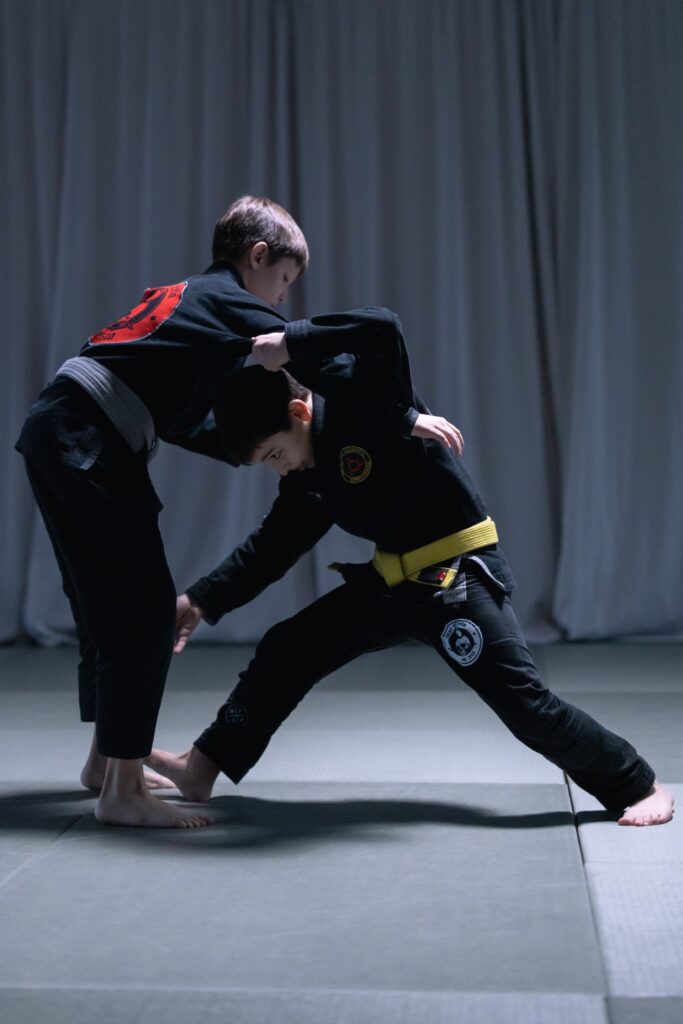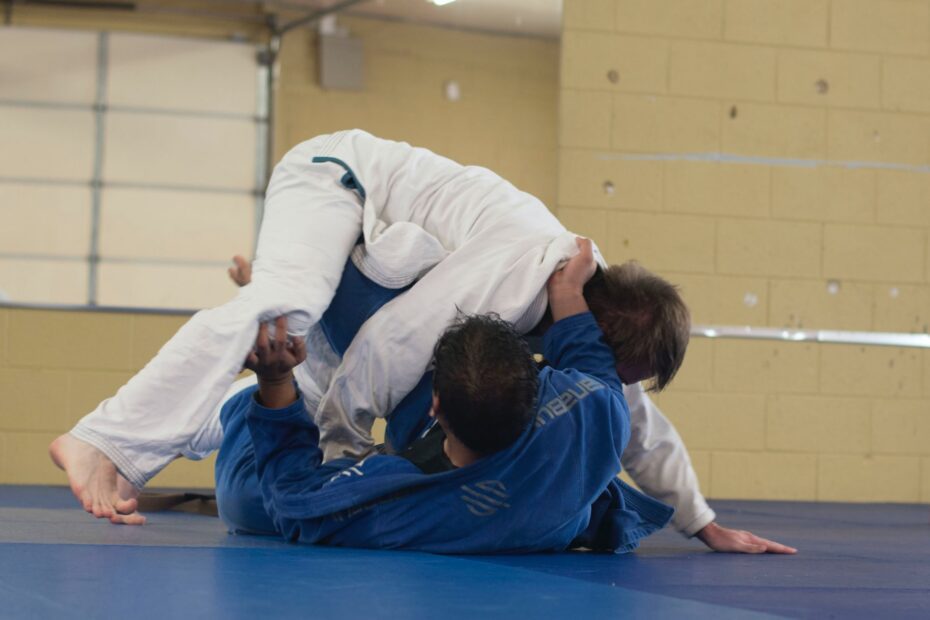If you’re reading this Combat Athlete Gear article, you want to learn more about the art of Brazilian Jiu Jitsu. Brazilian Jiu Jitsu (BJJ) is a grappling system that teaches someone to survive and possibly defeat a bigger, stronger, more aggressive opponent. BJJ practitioners learn how to take a fight to the ground and neutralize an attacker through dominant positioning and offensive attacks such as joint locks and strangles. Due to its nature and type of techniques, BJJ can be classified as ground fighting, submission grappling, and grappling.
After we go over a brief history of BJJ, we will answer some of the most common questions that are asked regarding BJJ.
History of Brazilian Jiu Jitsu
Much of the development and creation of Brazilian Jiu Jitsu is credited to the Gracie family in Brazil in the early 1900s. Its roots go back to kodokan judo, Japanese jujutsu, and wrestling as a result of the influences and training experienced by Helio Gracie and Carlos Gracie. Both Gracies learned traditional Japanese martial arts from Mitsuyo Maeda who received his training from judo’s founder, Kano Jigoro.
Carlos Gracie began learning from Maeda in 1917. Years later, Helio began training as well and ended up placing a greater emphasis on ground fighting and leverage. As time passed, BJJ diverged even more from judo due to its wider range of joint locks and time spent fighting on the ground (newaza). For example, judo only allows for elbow attacks and strangles in competition when the fight goes to the ground.
Brazilian Jiu Jitsu began spread outside of Brazil at a faster rate when Carley Gracie moved to the USA in 1972. In 1978, Rorion Gracie followed and co-founded the Ultimate Fighting Championship (UFC) which has reached a global scale today. BJJ really caught the attention of the martial arts world with Royce Gracie winning the 1st, 2nd, and 4th Ultimate Fighting Championships.
Today, there are BJJ gyms all around the world. BJJ is also used by military groups and law enforcement due to its effectiveness in self-defense. Now that we’ve covered the history of BJJ, we’ll answer some of the most common questions about the combat sport.
Can Brazilian Jiu Jitsu help me with my fitness goals?

Training in BJJ is a great way to improve your physical health. BJJ is a full-body workout that will utilize pulling and pushing muscles to accomplish your objectives on and off the mat. You’ll be able to experience an increase in bloody circulation and an improvement in your cardio. BJJ training will help you have stronger muscles and ligaments. You will also be able to increase your bone density through regular training.
As you feel yourself improve, you’ll most likely have a greater desire to optimize your health because you’ll want to always perform at your best. Below are 5 healthy tips that will help you get better as a Brazilian Jiu Jitsu practitioner.
5 healthy ways to improve your BJJ skills
- Hydrate: Water helps everything in your body function properly. Every organ from your brain to your skin needs water so make it a point to always stay hydrated. Your joints also need water to stay lubricated. Do what you need to so you drink enough water every day. It’s easier to stay on top of your hydration routine instead of trying to recover from dehydration.
- Eat before and after training: You need healthy, nutritious fuel in your body to properly train! Even if your goal is to lose weight, it’s still vital that you eat food before and after class. Your body needs calories, vitamins, and minerals to perform when you’re on the mat. Your body also needs calories, vitamins, and minerals to build and repair muscle after training.
- Sleep: Sleep is one of your best friends as you began your BJJ journey. Quality sleep will help you remember what you’ve learned in class, improve your problem solving abilities, and heal from tough workouts.
- Rest as needed: If you’ve been going hard for a month straight, it’s ok to take a break from training for a night or two. Even if that means you go for a walk instead of getting in some hard rounds, you’ll be making progress towards a longer BJJ career. Sometimes your body needs rest to heal up and help you be at your best.
- Tap early and often: One of the best ways to prevent injuries is to tap early and often! It’s easy to let your ego get in the way so resist the urge to fight off every submission and tap when you’ve been caught. It’s better for you to tap early than to get injured and have to take time off the mat.
Can BJJ be used in MMA?
Yes, BJJ can be used in Mixed Martial Arts. In fact, BJJ jumped in popularity due to the success of Royce Gracie using BJJ techniques to win against other fighters. Here’s early footage of Royce Gracie fighting in the UFC:
Is Brazilian Jiu Jitsu effective in self-defense?
Yes, Brazilian Jiu Jitsu can be highly effective in self-defense. A BJJ practitioner has opportunities to pressure-test his/her skills on a regular basis. This allows a BJJ practitioner to know what works and what doesn’t work against a full-resisting opponent. It’s a great skillset to have since many fights end up going to the ground.
BJJ allows the user to not only rely on speed and strength but also leverage and technique to neutralize an opponent. With consistent training, you can also have these skills and be able to think clearly in tough situations.
What type of equipment do I need to train BJJ?
If you’re doing gi classes then you will need a gi, a whitebelt, and a mouthguard. If you’re doing no gi classes then you will need a shirt/rashguard, shorts/spats, and a mouthguard.
Not everyone uses a mouthguard when training but we do recommend using one to reduce injuries.
Go train!
Now that you have a deeper knowledge of BJJ, start training! You can quickly find a BJJ gym to train at depending on where you live in the world. Once you’ve identified a gym you’re interested in training at, contact them to sign up for a trial class. Some gyms may even have a free week of classes for you to test out. Once you’ve tested out different gyms and have found one that works for you, start training!
